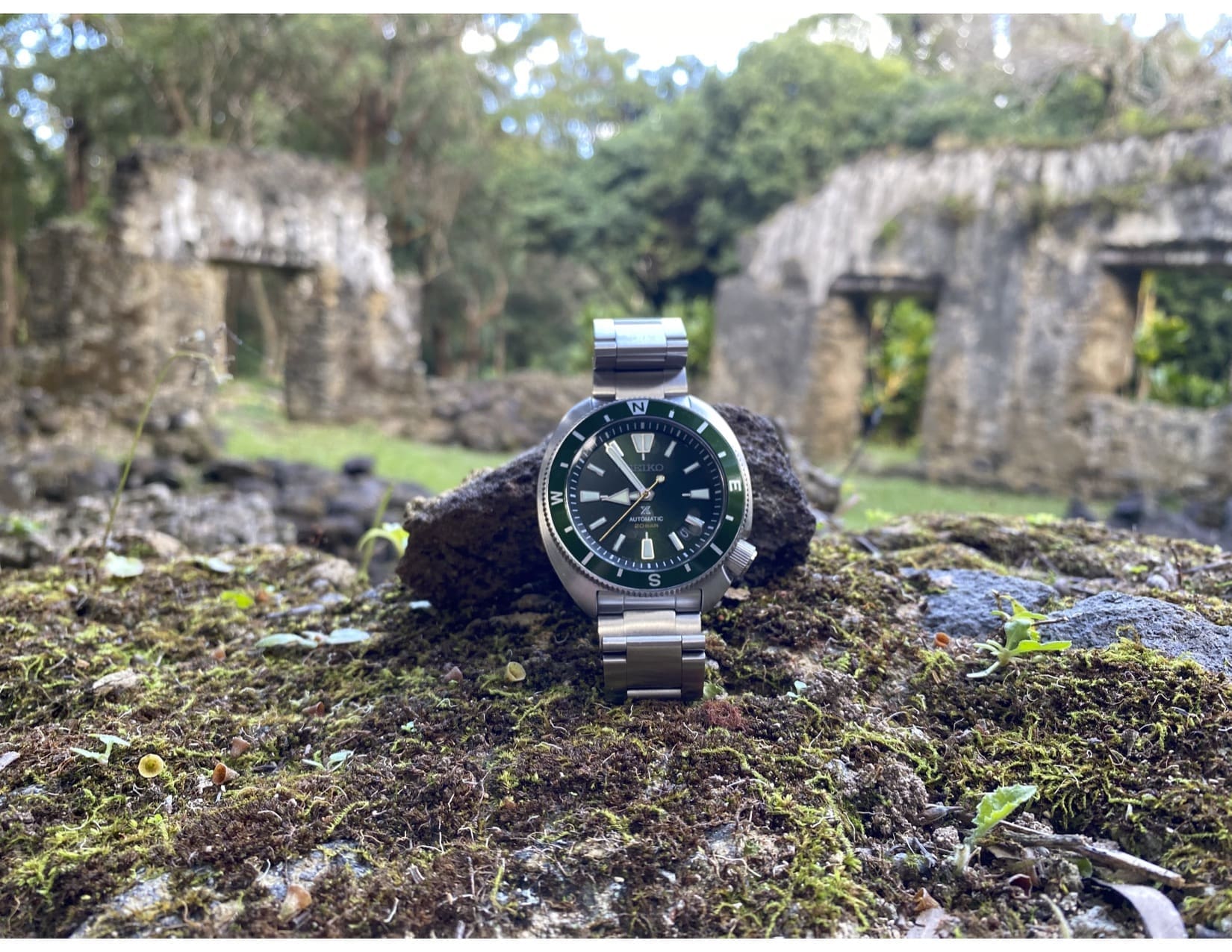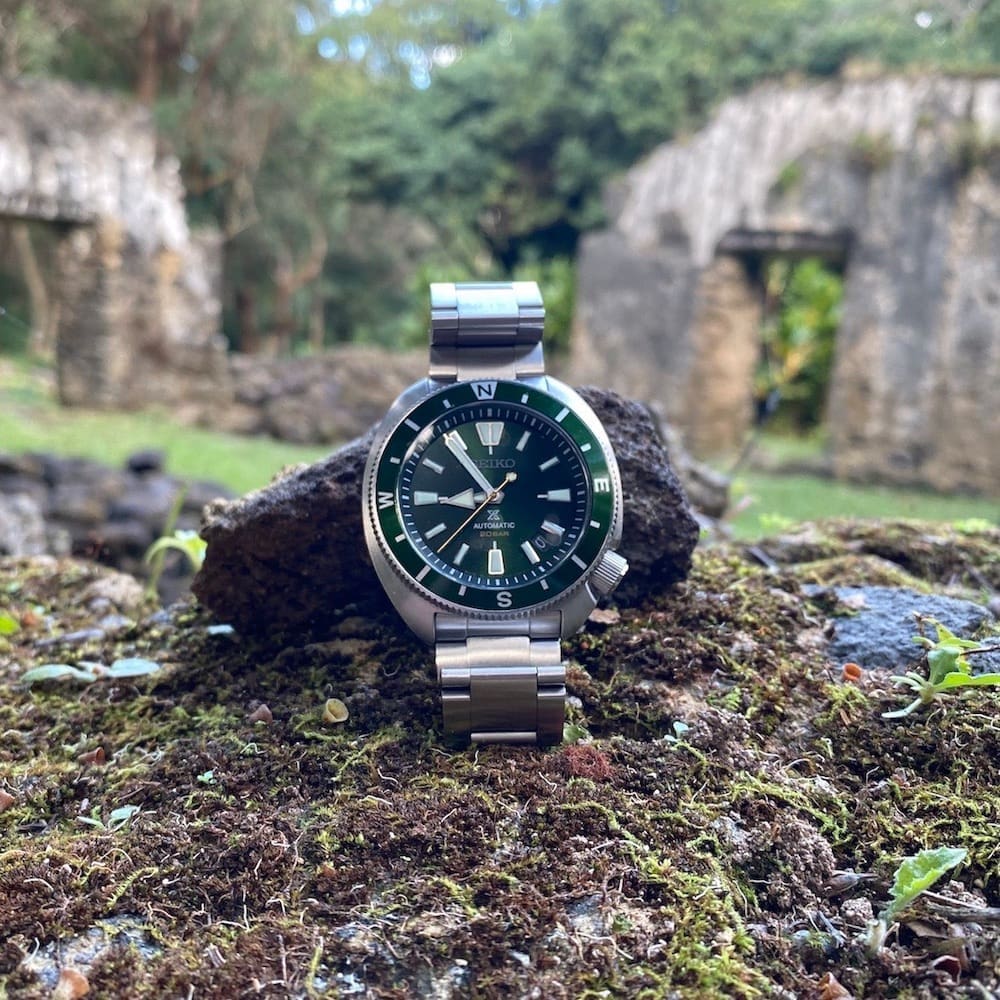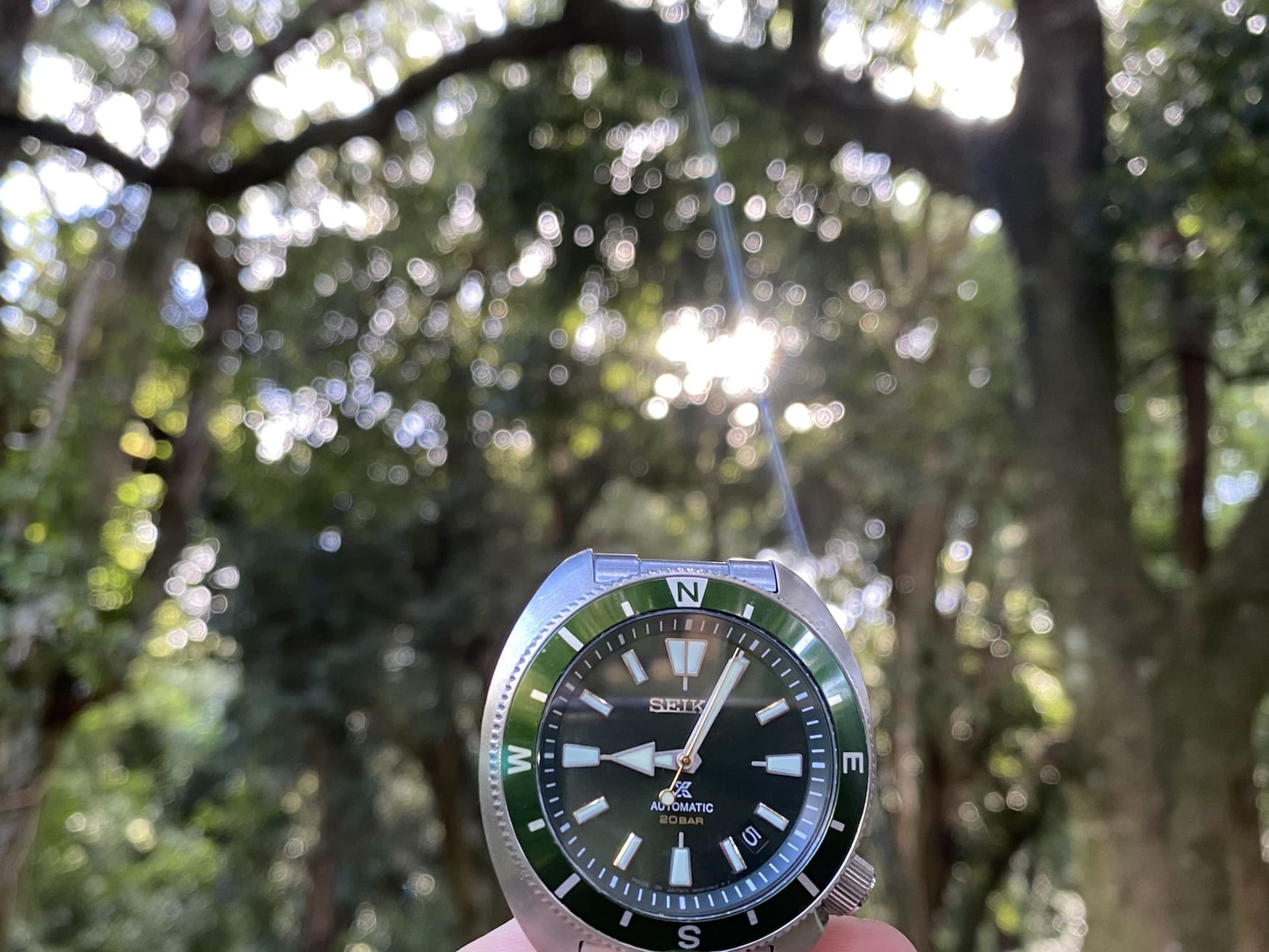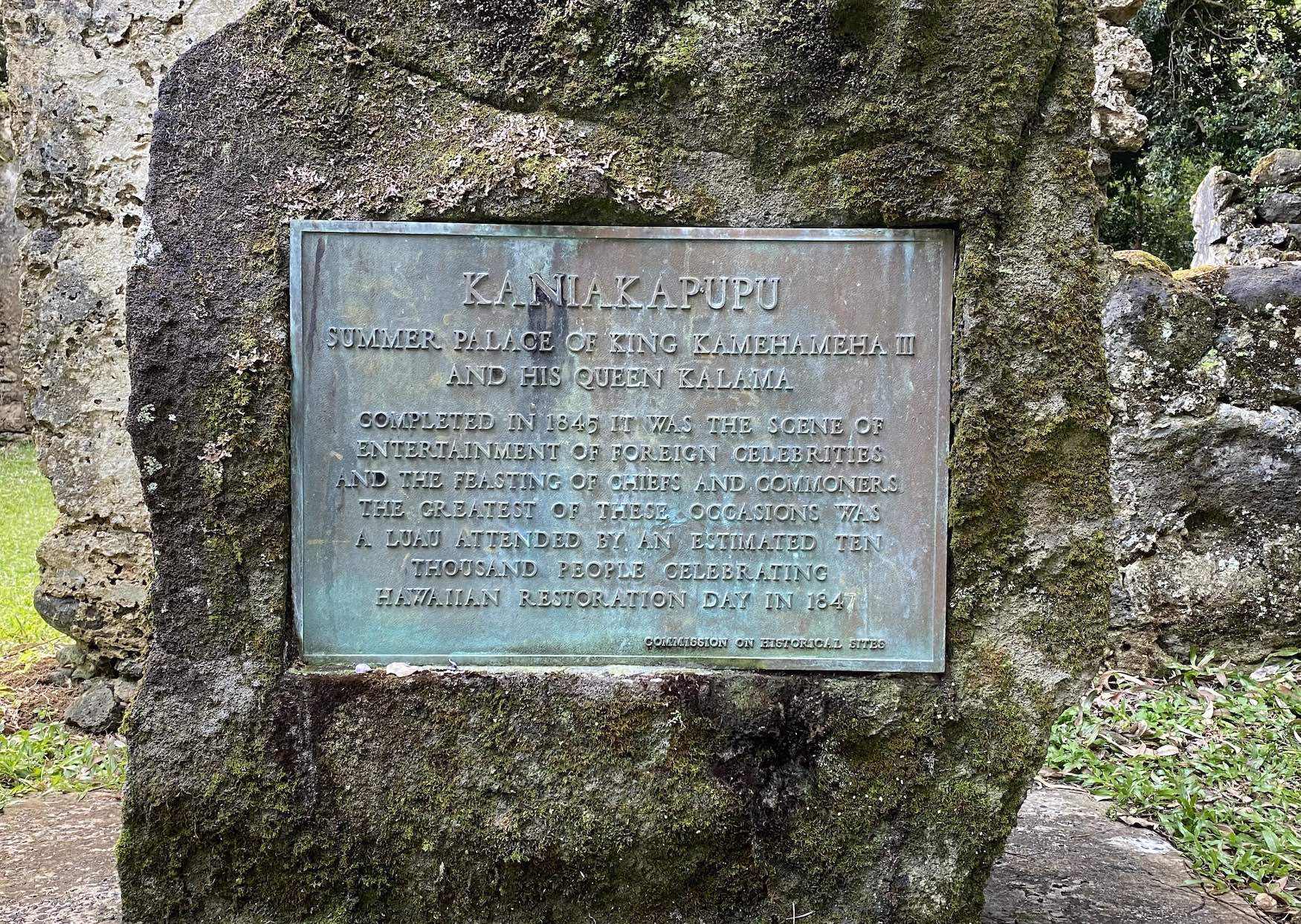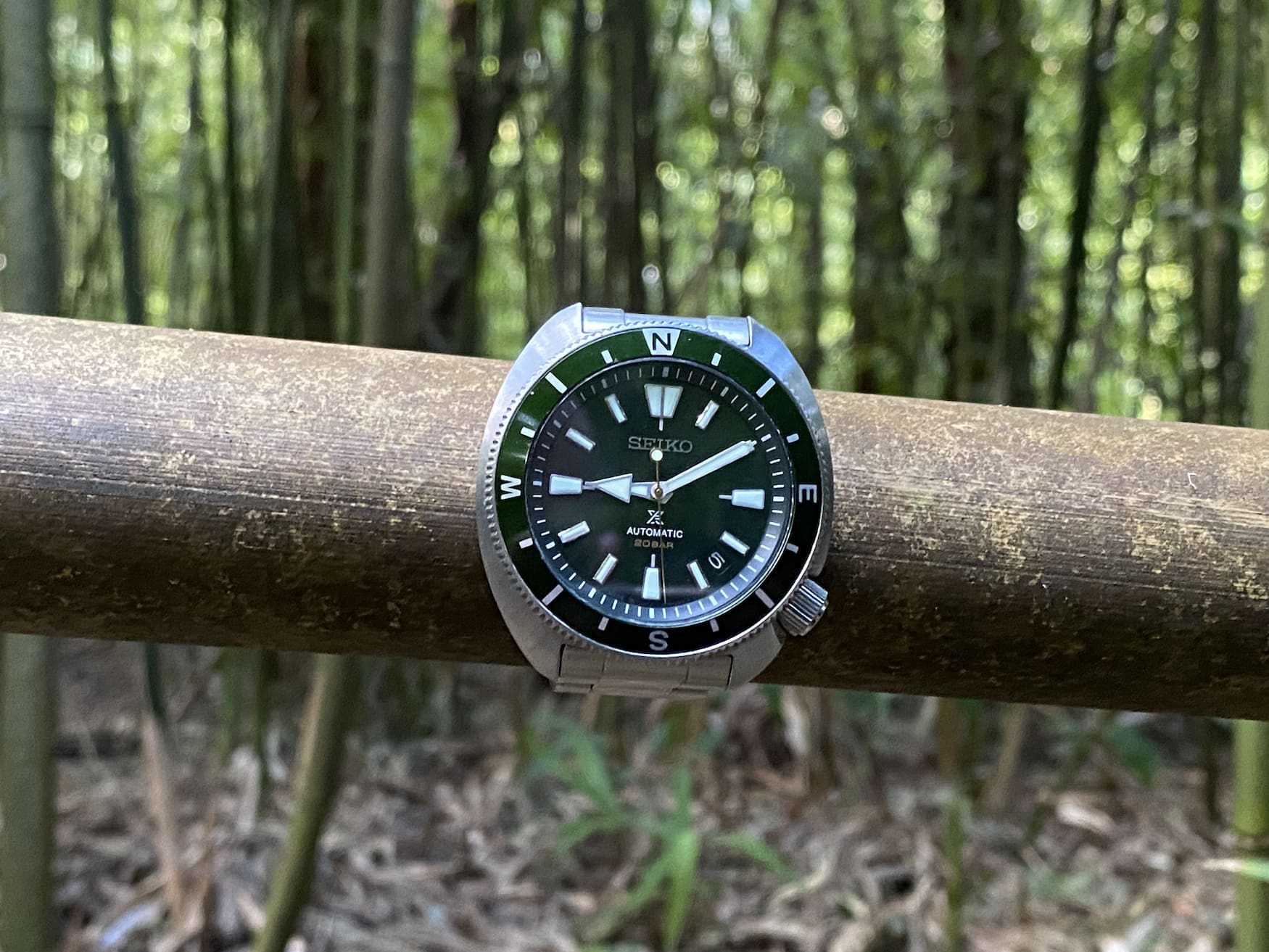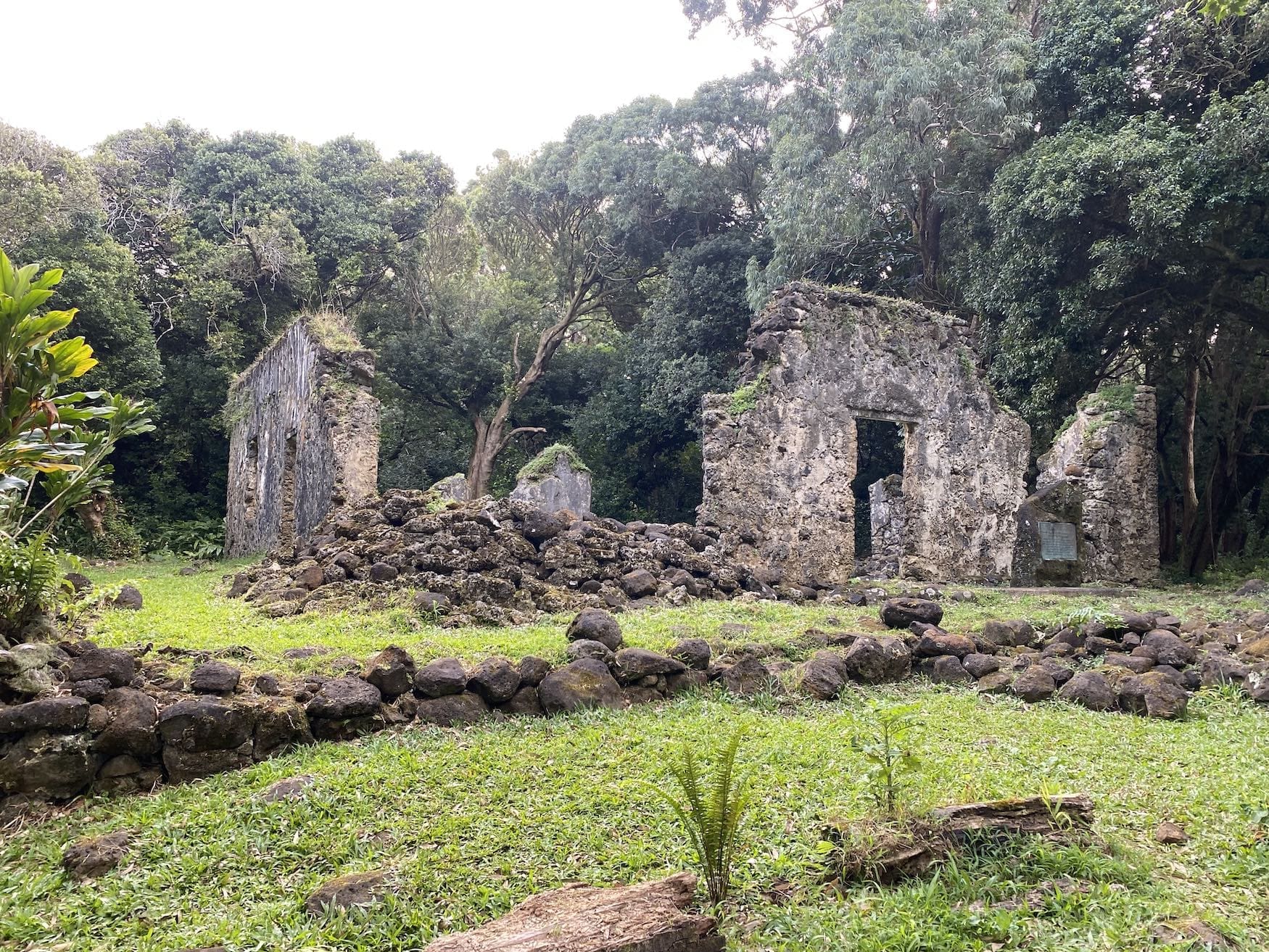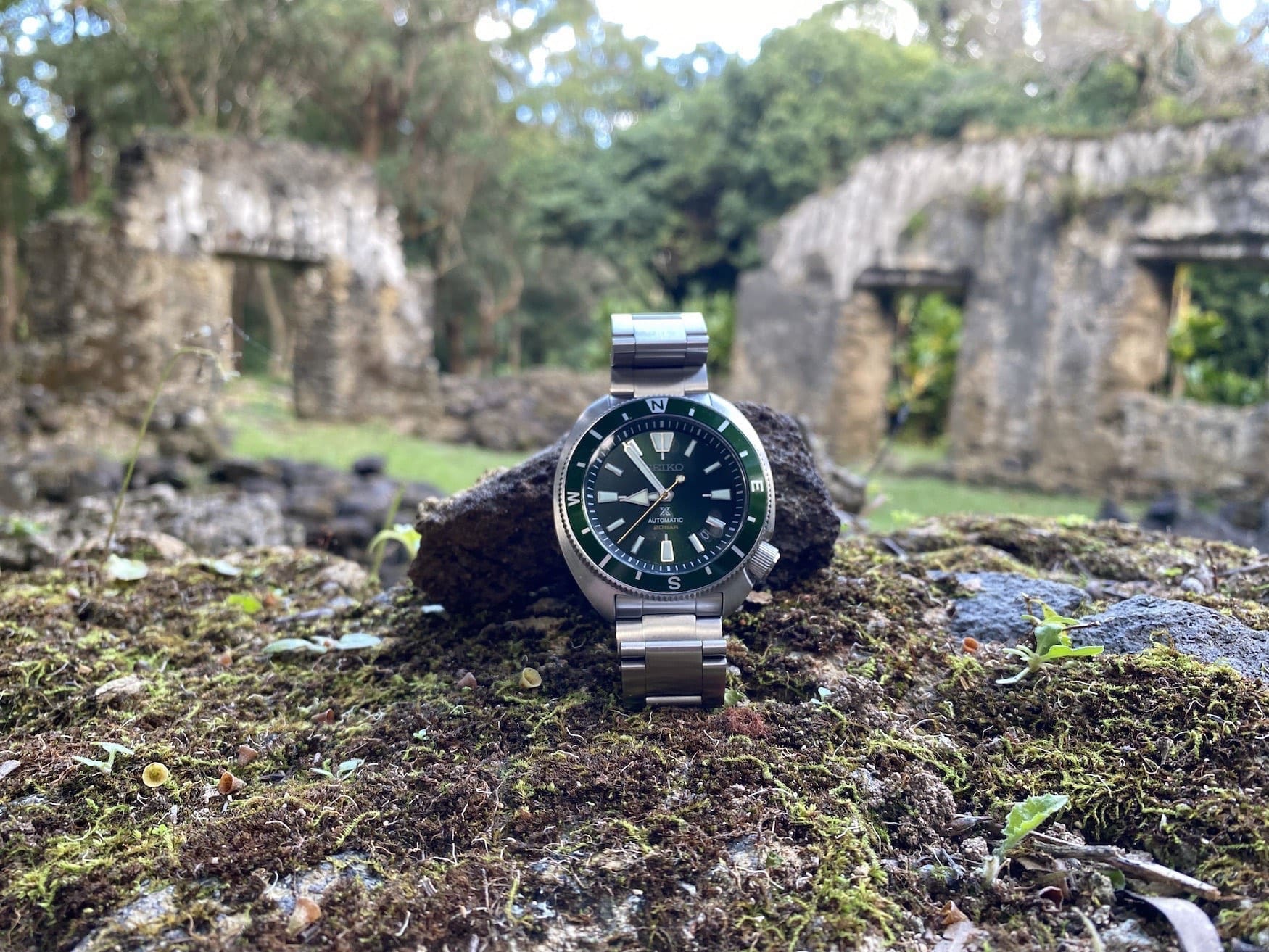Are compass bezels on watches actually useful? Adam put his Seiko to the test!
Adam ReederSo many of us tout our watches for their bells and whistles. It’s hard to attend a watch meet without hearing a phrase like “Look at this cool GMT hand!” or “Check out my helium escape valve!” But how many of these WIS have actually made use of these add-ons? Recently, I developed a crush on a lovely green Seiko Tortoise with quite an interesting bell and/or whistle. The watch in question was a Seiko Prospex SRPH15, which in addition to Seiko’s uber comfy turtle case, 200 metres of water resistance, and a durable sapphire crystal, includes a compass bezel. While a compass bezel sounds like more of a useful tool on a watch than most others, I thought I’d find out first-hand if this was in fact true.
How a compass bezel works
A standard compass bezel is usually multidirectional and clickless. It has markers for north, south, east, and west, and is most often uncluttered as to make it imminently legible. For the uninitiated, a compass bezel is quite simple to use and only requires three steps – though, the instructions vary slightly between the Northern and Southern Hemispheres. Since I’m in the Northern, I’ve used the following. Assuming you can see the sun, which is an important detail, you should hold the watch flat and aim the hour hand toward the direction of the sun. Then you rotate the bezel so that the South marker is positioned directly in the middle between the hour hand and the dial’s 12:00. For those Down Under, you point the 12 o’clock marker at the sun, and set the North marker of the compass bezel in the middle of the 12 o’clock marker and hour hand. You then have a relatively accurate bearing on your directions and can stick with the bearing that the bezel gives you.
However, these instructions come with a minor caveat directly from the Seiko website. For those who reside south of the Tropic of Cancer or north of the Tropic of Capricorn, using the bezel will not give you an accurate bearing at certain times of the year. This isn’t all that concerning, as the only things contained in this narrow strip are most of Africa, South and South East Asia, two thirds of South America and all of Central America, and the entire north of Australia. So really, no biggie. Guess what’s not affected by this? You guessed it – Hawaii! So who cares about the rest? Onward we go!
Putting it to the test
Before leaving on the hike, I checked a map to determine the orientation of the palace in relation to the trailhead. Thankfully, it wasn’t complicated. So, while the path was rather straightforward, I decided I would pretend that I didn’t know the trail was there and use only my compass bezel to navigate the eastbound route to my destination: the ruins of King Kamehameha III and Queen Kalama’s summer palace. As soon as we stepped off of the pavement and onto the dirt trail I looked up to orient my watch with the sun. As I was already in the thick of the bamboo forest and the sun was nowhere to be seen, I stepped back onto the pavement to try again. As I suspected, the entrance of the trail faced due east, but I could immediately see that it veered off to my left as it headed northeast.
If my original reading of the map was correct, then my bezel would lead us through this bamboo forest and eventually across the trail once more before re-entering the forest momentarily before arriving at the ruins. While I thought the lack of solar visibility in amongst the bamboo might make for a challenge, it wouldn’t come into play as long as we stayed on course and I kept the bezel properly aligned.
Roughly 45 seconds into our trek, I removed the watch to snap a quick photo. The first shot looked great, though the bezel was misaligned. I rotated it back so the N was properly lined up at 12:00 because details are important for a good photograph… and because I’m a complete moron, having forgotten that I was using the bezel for navigation. Thankfully, I had already snapped the first photo which allowed me to refer back and realign the bezel once again and get back on track.
Shortly after, I could see the ruins through the chutes. We exited into the clearing and made our way up to the remnants of the royal palace. It’s a somber site and one that should be treated with reverence and respect. We explored the outside of the palace without entering, as some suggest it’s disrespectful to do so. Despite the serious nature of this sober sight, my son (who accompanied me on this journey) and I felt it was a proud moment for both us. We felt exactly like 17th century American explorers Lewis and Clark. Oedipal struggles aside, my trusty compass bezel actually led us to our destination, with surprising accuracy.
The verdict
The compass bezel worked better than expected in helping us determine our location and direction. I would absolutely recommend relying exclusively on this type of tool watch for navigation, as long as the following hold true. Number one, you are purposely headed in a straight line, on walkable terrain with no geological roadblocks, during sunny conditions, with no tree cover, and you happen to live outside the Tropics of Cancer and Capricorn. For everyone else, it’s completely pointless. If wilderness safety is a real concern, you’d probably be better off with a Breitling Emergency or O-Boy Satellite Rescue. Nevertheless, watch collecting is rarely, if ever, practical. The fact that I will likely never again use my lovely green Seiko as a wayfinder doesn’t make it any less valuable to me. If it weren’t for this watch, I wouldn’t have the memory of hiking through a tropical bamboo forest to centuries-old ruins with my son by my side.




